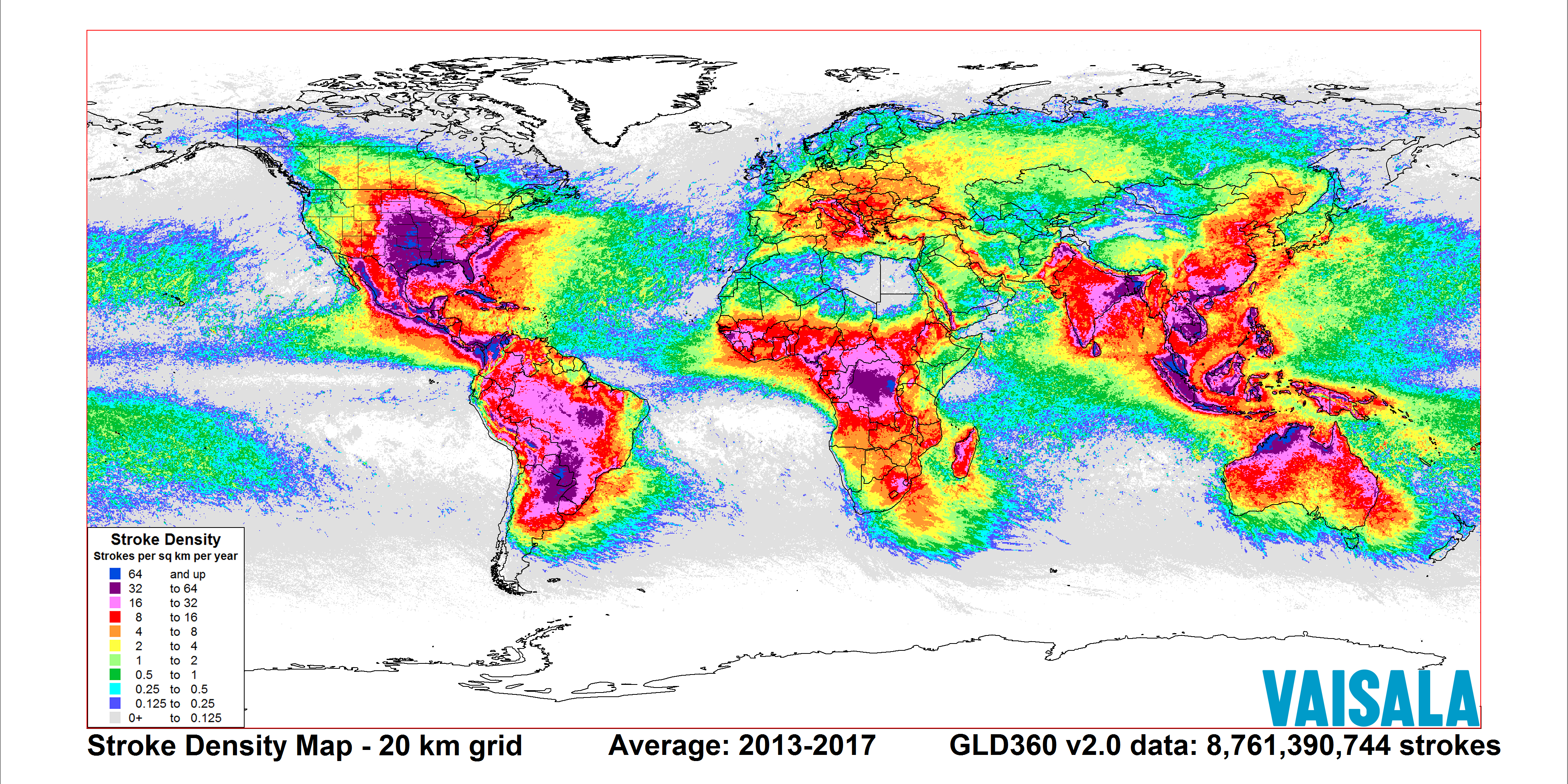The Least Likely Places to Be Struck by Lightning, Mapped
Where to go if you don’t enjoy sudden electric bolts from the sky.

There’s an old idiom that says lightning never strikes twice in the same place. While storm observers and meteorologists have proven this adage demonstrably false, a new map from global lightning detection network Vaisala shows that some places in the world are more disposed to lightning than others.
Vaisala tracked roughly 8.8 million lightning strikes between 2013 and 2017 and compiled the data into a colorful density map. If you’re concerned about the (very low) likelihood of getting hit by lightning, it’s best to look at the purple and blue bits. In North America, the Great Plains and Gulf Coast regions are the most prone to these white bolts of heat. Northern parts of Australia’s coastline, southern India, the Swiss Alps, the Democratic Republic of Congo, and inland Brazil are just a few of the susceptible hot spots in the world.
The electrical sparks typically result from opposite charges between two storm clouds or a storm cloud and the ground. Up to 24,000 people die of lightning strikes a year globally. For context, around 1.25 million people die in traffic accidents. If you are looking to minimize your chance of an encounter with one of the 8 million bolts that hit Earth every day, Antarctica is the one of the safest options. Egypt and the Patagonia area at the bottom of South America are some alternatives, if you don’t like year-round cold.
One last bit of good news: Of those unlucky folks who do happen to become the perfect conduit for a bolt from the sky, 90 percent survive to see another day and another lightning strike.











Follow us on Twitter to get the latest on the world's hidden wonders.
Like us on Facebook to get the latest on the world's hidden wonders.
Follow us on Twitter Like us on Facebook